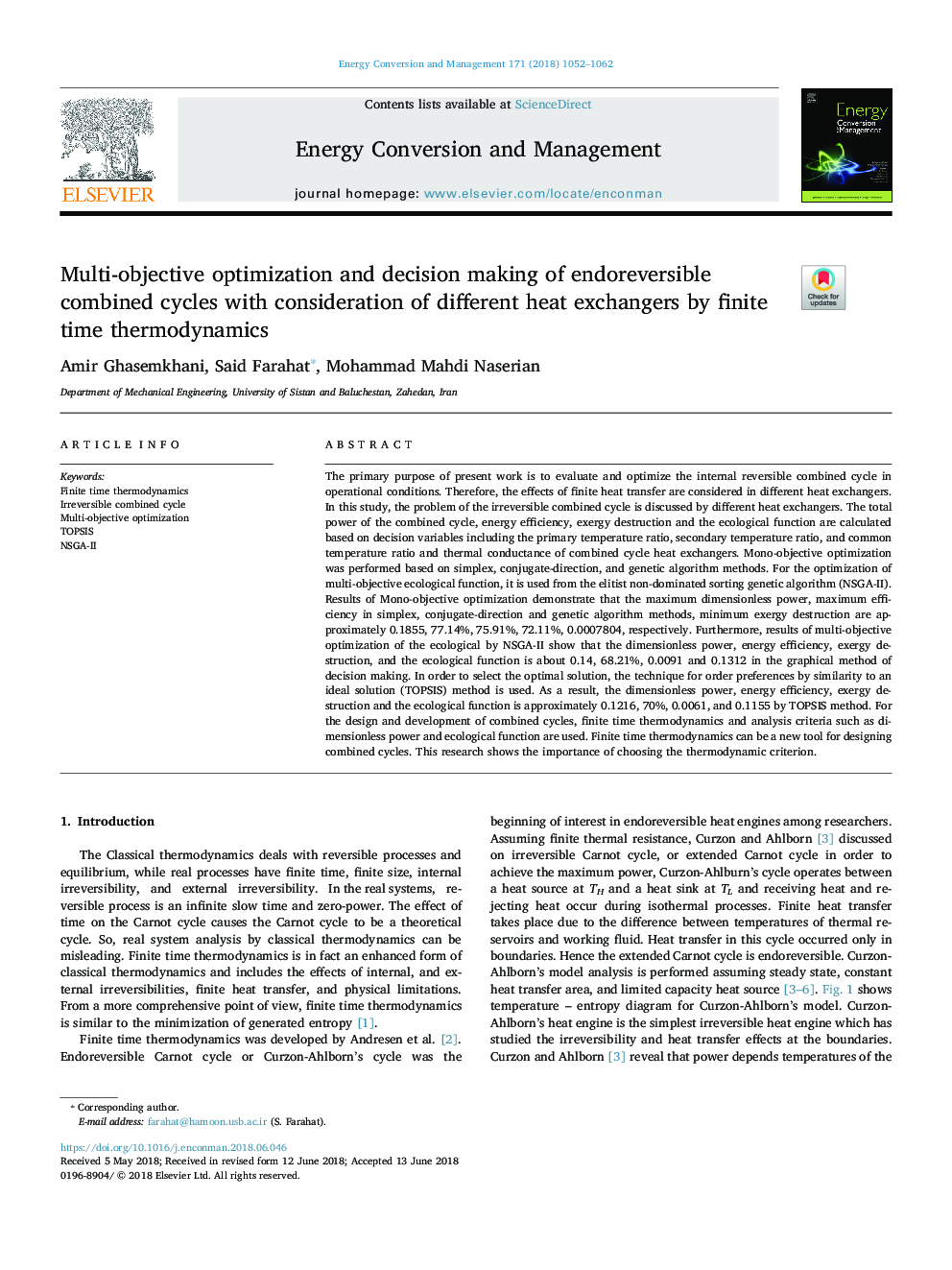| Article ID | Journal | Published Year | Pages | File Type |
|---|---|---|---|---|
| 7158089 | Energy Conversion and Management | 2018 | 11 Pages |
Abstract
The primary purpose of present work is to evaluate and optimize the internal reversible combined cycle in operational conditions. Therefore, the effects of finite heat transfer are considered in different heat exchangers. In this study, the problem of the irreversible combined cycle is discussed by different heat exchangers. The total power of the combined cycle, energy efficiency, exergy destruction and the ecological function are calculated based on decision variables including the primary temperature ratio, secondary temperature ratio, and common temperature ratio and thermal conductance of combined cycle heat exchangers. Mono-objective optimization was performed based on simplex, conjugate-direction, and genetic algorithm methods. For the optimization of multi-objective ecological function, it is used from the elitist non-dominated sorting genetic algorithm (NSGA-II). Results of Mono-objective optimization demonstrate that the maximum dimensionless power, maximum efficiency in simplex, conjugate-direction and genetic algorithm methods, minimum exergy destruction are approximately 0.1855, 77.14%, 75.91%, 72.11%, 0.0007804, respectively. Furthermore, results of multi-objective optimization of the ecological by NSGA-II show that the dimensionless power, energy efficiency, exergy destruction, and the ecological function is about 0.14, 68.21%, 0.0091 and 0.1312 in the graphical method of decision making. In order to select the optimal solution, the technique for order preferences by similarity to an ideal solution (TOPSIS) method is used. As a result, the dimensionless power, energy efficiency, exergy destruction and the ecological function is approximately 0.1216, 70%, 0.0061, and 0.1155 by TOPSIS method. For the design and development of combined cycles, finite time thermodynamics and analysis criteria such as dimensionless power and ecological function are used. Finite time thermodynamics can be a new tool for designing combined cycles. This research shows the importance of choosing the thermodynamic criterion.
Related Topics
Physical Sciences and Engineering
Energy
Energy (General)
Authors
Amir Ghasemkhani, Said Farahat, Mohammad Mahdi Naserian,
